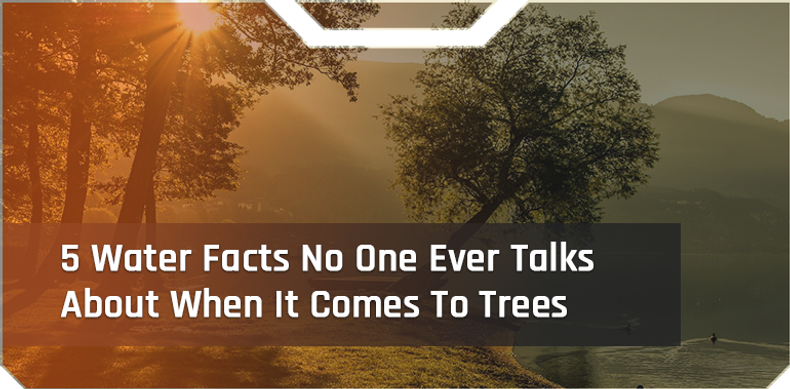5 Water Facts No One Ever Talks About When It Comes To Trees
Have you ever heard of Resurrection Bushes? Do you know why some trees have waxy leaves or hairy leaves? Do you know when recycling is actually bad for the environment?
If you read on you will know the answers to all of these questions, and also learn a few more weird facts about trees and water.
Welcome to the weird world of tree science.
Let’s get strange.
Related Article: A Guide To When A Tree Needs Care
1. There Are Zombie Bushes That Are Used For Skin Care, Respiratory Health, & Some Day May Be Used To Treat Herpes.
There is a whole class of plants called Resurrection Plants. These plants sort of “hibernate” and act dead, drying out completely until they are exposed to water.
Some of them can be “dead” for 100-150 years and then come back from the grave within hours of getting some rain.
As you may imagine, this is really useful for plants living in deserts and other dry places. What is maybe less obvious is that some of these plants have some pretty incredible medicinal qualities to them.
One of the most interesting plants in the world is Southern Africa’s Resurrection Bush. This zombie plant dries out for 7-8 months of the year and then returns from this near-death experience during rain season.
The Resurrection Bush (Myrothamnus flabellifolia) is traditionally used as a homeopathic medicine for asthma and respiratory infections. There is not much research regarding these uses in Western Medicine, but this plant is popular for similar uses across several other cultures.
In Western Culture, Resurrection Bush is used to create cosmetic products for skin care. Currently, scientists are researching it for potential uses as a treatment for herpes.
2. Hairy Leaves Help Plants Save Water.
Trees naturally develop in many ways to survive with less access to water.
Leaves that have hairy qualities or a waxy texture hold in water better. Trees with smaller leaves also release less moisture. All of these features will help a tree survive with less water access.
3. Many Of The Trees In Your Neighbor’s Yard Were Not Meant To Survive In The Place Where You Live.
Let’s be real- if you are in the Los Angeles area, Arizona, Nevada, or other similar areas, you are living in a desert.
To be even more real, desserts were not intended by nature to have lawns or most types of trees. If you plant a tree that is non-native to your area, chances are it will need a lot of watering to continue living.
There are some trees, like Honey Mesquites, that are well equipped for naturally dry climates. Honey Mesquites are also pretty exceptional in their value in helping sustain bee populations (a pretty important thing these days), and as habitats for butterflies.
You are maybe already aware of how Mesquite is used as firewood and as a sweet seasoning for BBQ’s.
Honey Mesquite and similar trees have deep roots which help them access underground water sources. They initially require deep watering but then can survive for long periods of time without rain or unnatural irrigation.
4. Organic Mulch Is Better Than Most Other Fertilizers In Almost Every Way.
Organic Mulch doesn’t sound that sexy, but it is pretty much the best form of fertilizer out there for a tree. Arborist Mulch, which is made out of plant matter from trees and other elements found near them, is especially incredible.
Related Articles: How, Where, And Why To Use Arborist Mulch
Part of the secret behind mulch is that it improves the structure of the surrounding soil. It limits competition from nearby weeds that can feed on the same water sources.
Organic Mulch creates new organic matter that is full of nutrients when it decomposes. That sounds kind of gross, but it is the best way for a tree to receive nutrients in a slow, sustainable way, and it also helps with retaining water.
5. Recycled Water Is Not Always Great For Trees But There Are Some Things That You Can Do To Help.
A lot of recycled water comes with extra salt. The PH balance is often not ideal either. However, that doesn’t mean that trees watered with recycled water are hopeless.
There are a few things that you can do to improve the lives of trees and other plants that are using recycled water for hydration.
Sandy soils tend to be more appropriate for these applications because it offers the best quality for draining water. This often does require more frequent irrigation or watering methods, but it is a good way to be able to limit water waste.
Closing Thoughts
Arborists and tree workers literally need to know about trees inside and out. Understanding watering practices is crucial for proper planting practices and tree maintenance.
We admit that some of these facts are a bit strange, but we promise you that they are all 100% true!





